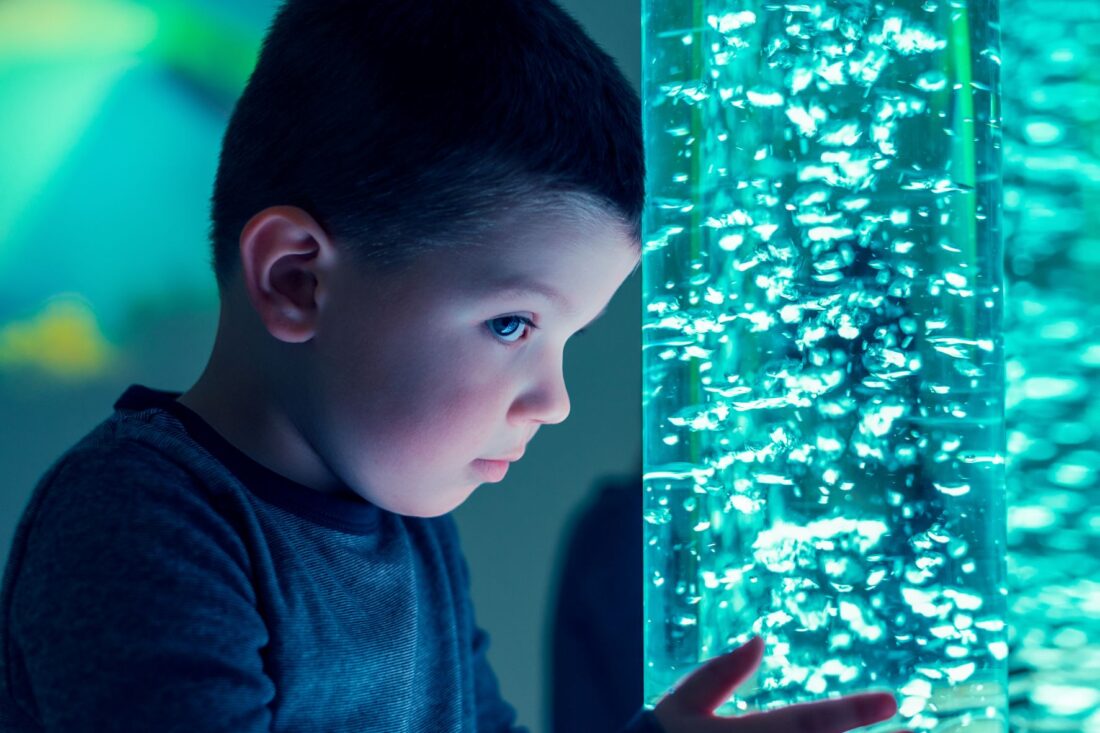Chillout space vs Sensory room

By Joanna Grace, The Sensory Projects
Multisensory rooms are amazing spaces, perhaps you’ve seen one in a special school, or visited one somewhere. It is very easy to want something that looks so wonderful. But if you are considering installing a sensory room in your setting there is more to think about than just what looks attractive. You need to think about who the room is for, and what it’s purpose is. Is it a space to chill out in? Is it a space to create engagement, entertainment, to educate? Is it a space for people of particular abilities? Or with particular sensitivies? For example autistic people often have heightened sensory awareness, meaning that visiting a new place, with lots of new sensations on offer can be overwhelming for them. Some heritage settings offer a sensory room for people who might need time out away from the stimulation of the setting. You can see, as you read this, how, if what you are looking for a room to do is provide a sensory rest as it were, then having a room with lots of gadgets that flash and sing and look amazing and are super exciting, might not be what you’re going for.
Another demographic it is good to consider when thinking about sensory rooms is people with sensory impairments, imagine you have someone visiting your setting who has a visual impairment, picking out one object from the background of everything else that is going on can be very difficult for them. But perhaps in a sensory room, you could create a plain backdrop, simple darkness, and against that backdrop you could spotlight the tool used long ago, or the necklace that the queen once wore. It would be in this room that they got to see the treasures your setting holds, this room would be their access point to the stories you tell.
Maybe it isn’t these people you are considering, maybe you are thinking of the young people who do not immediately click with the narratives houses in your setting because they are accustomed to the online world, to video games and internet connectivity. As they walk around your building, listen to the stories, handle the objects it’s not enough to connect them to it. They need a way in that excites them. In an immersive room you could drop them into the past, you could stand them within a video projection and they could watch the cannon balls flying overhead, hear the explosions, they could creep into the bedchamber, maybe you could even waft the smell of the chamber pots in there too! This visceral experience brings home to them the idea of the past being real, and then when they step out of that room and into your building they pick up with awe the objects that they saw in that porthole to the past that is your sensory room.
I wrote a book called Multiple Multisensory Rooms: Myth Busting the Magic, the first word of that book’s title is important: Multiple. There is not just one thing, your choice is not do we install a sensory room or not. The question is what sort of room? I could not possibly list them all hear there are so many different types of sensory room and the possibilities increase as technology rushes on.
Start by thinking what you want the room for, and who you want to use it. Is it a get away space, a chill out area, or is it a place to engage and entertain? Who is going to be using it?
Saying things like “we want it to do both” or “it should be for everyone” sounds lovely at first, but is often doomed to fail. To get a room to do both you need to be able to animate it really well, and of course it can never do both at once. Saying it should be for everyone sounds wonderfully inclusive, but what about the contradicting needs of someone who needs peace and someone who needs stimulation. Quite often if everyone has access then no one has their needs met. So whose needs are you looking to address?
Designing a sensory room should always come from the start point of thinking about the people who will use it, and never from flipping through the pages of a catalogue.
To explore more questions to inform your sensory room practice please read: Multiple Multisensory Rooms Myth Busting the Magic or come and study with The Sensory Project’s Online College: Multisensory Rooms Myth Busting the Magic


